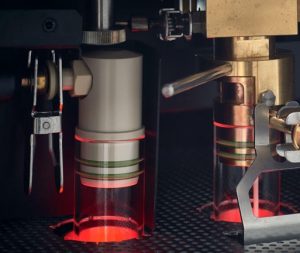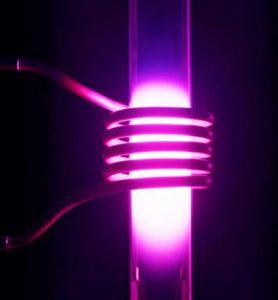We provide 2 types of Elemental Analysis:
- CHNSO determination (%)
- Element screening and absolute quantitation (others than CHNSO).
| Carbon, Hydrogen, Nitrogen, Sulfur and Oxygen determination. This analysis can be done in variety of organic substances. The sample has to be precisely weighted using an accurate microbalance, then combustion is conducted in an excess of oxygen. Subsequently the resulting gases are reduced, separated using an absorption column and detected using TDC and IR detectors. For C, H, N and S, the combustion is typically performed at 1100°C. Detection of S is performed using an IR detector for improved sensitivity. For O determination the sample is pyrolized at 1300°C with an excess of carbon. The CO in the gaseous product is subsequently oxidized to CO2, which is determined by IR spectroscopy. Samples are analyzed in triplicate and in case of a deviation > ± 0.5%, additional measurements are done if sufficient amount of sample is available. Because this technique is susceptible to any traces of impurities such as dust and moisture that cause deviations from the expected composition, the samples should be clean and carefully prepared. |

CHNSO |
|
 ICP |
Multielement quantitation. This analysis is done using Inductively-Coupled Plasma (ICP) ionization interfaced with either the Optical Emission Spectrometry (OES) or Mass Spectrometry (MS) detection. A multielement screening can be done in case of unknown composition of the sample, as well as a precise quantitation of selected elements. The ICP source is made by ionizing argon gas, to dissociate the sample into ions. ICP-OES is a fast multi-element technique with moderate detection limits (~0.2-100 ppb). ICP-MS is a multi-element technique for trace analysis where low detection limits (0.0005-1.0 ppb) are required. |
We provide service and scientific support to ISIC and EPFL research groups, external academics as well as external clients from industry (if desired under NDA).
Users can access the facility through instrument training and open access (ICP-OES only, contact us for training) or through sample submission in service mode as well as collaboration.
If you have any questions, please drop us an email at: ea-isic@epfl.ch